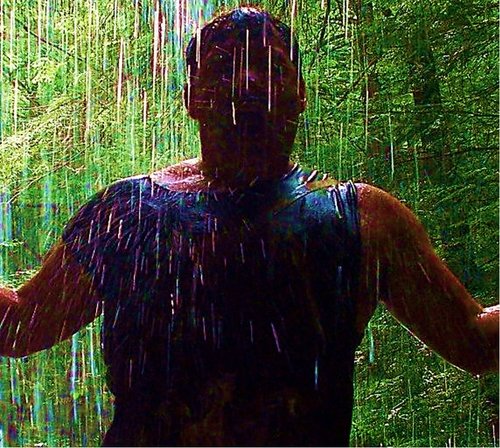MOVIE REVIEWS
 Review by Wuchak
Review by Wuchak
***For a moment there was peace, love and joy... a moment only*** Released 50 years after the event, “Woodstock: Three Days that Defined a Generation” documents the iconic concert that took place for 3.5 days in mid-August, 1969, at the height of the Vietnam fiasco and the counterculture movement. The initial estimates for attendance were up to 50,000 with later top guesstimates around 150,000. WAY more people came than expected and it was the biggest gathering of people in one place in history, over 400,000, only beat by the infamous Isle of Wight concert in England a year later. The film shows the good and bad of the hippie culture, but mostly the good. Generally speaking, the movement was a reaction against the Vietnam war and the sterile legalism that America and similar countries had devolved into by the early-mid 60s. The youth wanted freedom, peace and love and you can see this in the flick. It was a good thing. Yet you can also see the bad, like acid trips. Both Janis Joplin and Jimi Hendrix appeared at Woodstock, but they'd be dead in a little over a year, both only 27 years-old. Jim Morrison & the Doors didn't play because they declined at the last moment and later regretted it. Jim died shortly after the other two, also only 27. Interestingly, Jethro Tull declined because Ian Anderson didn't like hippies and was concerned about things like inappropriate nudity (?!). Nevertheless, Woodstock was an amazing event, never to be repeated. They tried at Altamont Speedway in California less than four months later, and also at Isle of Wight, but both festivals turned out badly and put the kibosh on the movement's noble ideals, even though it was pretty much inevitable since freedom without wise parameters naturally devolves into chaos and self-destruction. Like the original 1970 documentary, this new version is fascinating and supremely entertaining, but it doesn’t focus on the music as much. There are snippets of songs, but never full cuts. This version has more behind-the-scenes material, starting with the four minds that concocted the event: Michael Lang, Artie Kornfeld, Joel Rosenman and John P. Roberts. The latter two financed it. The original site for the event was Wallkill, New York. A mere five weeks before the concert town officials put the kibosh on it after much progress was made with construction for the grounds. Thankfully, Max Yasgur offered his dairy farm in Bethel to host the event, which is about 40 miles west of Wallkill. A huge part of the appeal of both documentaries is the sheer magnitude of the experience and the corresponding entertaining escapades of the festival. This includes of course the footage of the people: the hippies who came, the masterminds, the workers, the artists and the adults who lived there and tried to help or make the best of it. A good example would be the skinny dipping or semi-skinny dipping. Although this may have been a cool experiment at the event it never caught-on in the culture at large. Why? Probably because few people want to see someone else's Mr. Johnson; and, unless a female has the body of a starlet, who wants to see it? (lol). But what can explain the mass appeal of Woodstock? What made the hippies come out en masse? Was it just the music? In the 1970 film a guy who looked to be around 16-17 said it wasn't just the music for him. He & fellow hippies crawled out of the woodwork, so to speak, like zombies seeking some kind of solace, a sense of community, a reason to... live… and celebrate. And Woodstock met that need. It’s interesting how diversified the styles of music were and how non-heavy. Don't get me wrong, many of the performances are seriously energetic, but they're light compared to what rock/metal evolved into in the 70s to the present. There was acoustic folk, Caribbean, blues, rock, gospel, pop, 50s, Latin rock, jazz fusion and psychedelic rock. What's amazing is how brief the classic hippie era was. It started around '65 and its apex was Woodstock in August '69, a mere four years later. From there it was all downhill with Altamont, Isle of Wight and the deaths of the movement's principal icons, not to mention the Manson murders a week before Woodstock. Thankfully, we have the 1970 documentary and this new one to see the good aspects of the period; some bad, some eye-rolling, but mostly good, and all entertaining. Violence was non-existent. There were a couple of births counterbalanced by two deaths, one from drug overdose and the other a guy sleeping under a tractor who accidently got ran over (the driver obviously wasn’t aware he was there). The film was shot mostly in Bethel, New York, and runs 1 hour, 46 minutes. GRADE: A